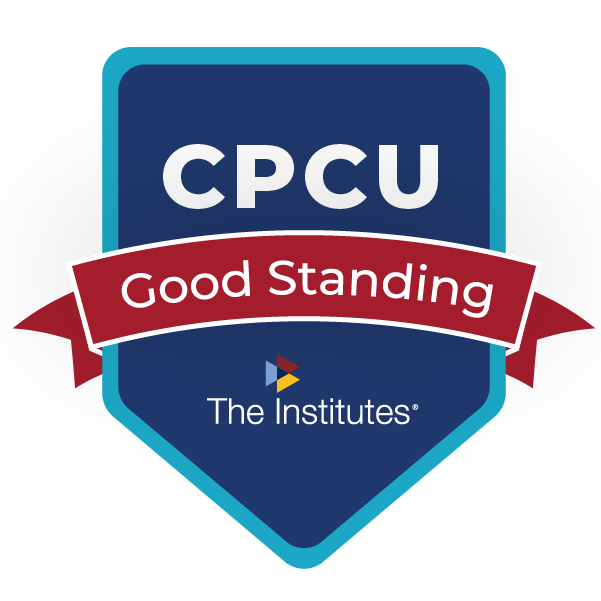Structured Oil & Gas Leases
Tax Savings Strategy Helps Save You Money, Secure Your Future
Background
With domestic oil & gas exploration on the rise, landowners around the country are being approached by landmen representing oil & gas companies who want to lease their land and the rights to minerals they believe lie beneath the surface.
In addition to potential future royalties, these leases typically include a provision for a one-time up-front bonus payment paid as an incentive to the landowner to enter into a lease.
Up-front bonus payments, usually a “per acre” sum, can be substantial. Landowners can receive hundreds of thousands, even millions, of dollars even if the drilling comes up short and no gas or oil is ever discovered.
That’s the good news.
Enter Uncle Sam
Because the up-front bonus is paid in one year only, many landowners find they are taxed at the highest marginal tax brackets, upwards of 50%, for one year only.
There is a Better Alternative
 By choosing, IN ADVANCE (that’s key), a Structured Oil & Gas Lease Bonus Option, landowners can lower their tax burden and earn pre-tax, deferred income accumulation designed to payout according to a schedule they select.
By choosing, IN ADVANCE (that’s key), a Structured Oil & Gas Lease Bonus Option, landowners can lower their tax burden and earn pre-tax, deferred income accumulation designed to payout according to a schedule they select.
Revenue Ruling 68-606 permits cash method taxpayers (most of us) to defer their bonus payments provided their instalment bonus is not “transferable and readily saleable.”
Those familiar with Structured Settlements and Structured Sales understand that a properly crafted settlement, or in this case lease agreement, results in a contract that is not transferable or readily saleable.
Both sides must agree to the transaction and our firm prepares the requisite paperwork needed to conclude the matter properly.
For Further Information
This blog is simply designed to give you the highlights. We pride ourselves on our personalized approach to our business and welcome the opportunity to discuss this, or any related topic, in greater detail as needed. Just call or email us to let us know how we can help. Or visit:
If your law firm has a section dedicated to oil & gas leases, this can be a terrific value-added alternative to cash that costs your clients nothing. In fact, it saves them money.
DePuy Hip Replacement Poisoning
In yet another example of the adverse consequences stemming from some implanted DePuy metal-on-metal artificial hip devices, a number of San Diegans claim their hip surgeries poisoned them.
ABC affiliate Channel 10 in San Diego recently featured a report which focused on 62 year-old hip replacement patient Tony Stauffer who describes his painful ordeal. The link includes an embedded video segment of the news story.
Stauffer’s attorney, John Gomez, laments the FDA’s fast-tracking of the recalled DePuy devices which may have exacerbated the problem. Mr. Gomez represents several dozen San Diego area plaintiffs pursuing damages against DePuy.
For a personal testimony on why our firm is so interested in this particular litigation, patients and attorneys are invited to watch a short video we produced for patients pursuing remedy.
Go to ASRHipSettlement.com to view the video on our firm’s YouTube channel.
Posted: August 10, 2011 | Category: Articles, Blog, DePuy ASR Hip Recall, Structured Settlements | Comments Off on DePuy Hip Replacement Poisoning
Joint Replacement Primer
For those lucky enough to have avoided joint replacement surgery thus far in their lives, a helpful article appeared recently in The Huffington Post.
Entitled 13 Must-Know Facts About Joint Replacements, the article shares some timely tips for those who are contemplating surgery.
While our firm continues to follow the DePuy Hip Recall with great interest and understands this article comes too late for many, we’re pleased to share this constructive news for those are understandably anxious about joint replacement surgery.
Posted: July 29, 2011 | Category: Articles, Blog, DePuy ASR Hip Recall | Comments Off on Joint Replacement Primer
Blasting Caps in North Carolina
NC House: $500,000 caps on MedMal Noneconomic Damages
Continuing a trend across the country, the North Carolina House voted to override Gov. Beverly Perdue’s veto of legislation that caps medical malpractice noneconomic damages at $500,000 for medical malpractice cases.
This North Carolina change tracks with similar tort reform efforts and court decisions recently occurring in Texas, Oklahoma, Pennsylvania, West Virginia and other states from coast to coast.
Expect this trend to continue.
Not surprisingly, different interests line up on different sides of this debate:
Insurance Industry: Argues tort reform and caps are necessary to help keep premiums affordable.
Legislatures: Argue tort reform is necessary to attract businesses who would otherwise flee states with “unfriendly” business climates.
Plaintiff Attorneys: Argue caps artificially limit an aggrieved plaintiff’s ability to receive fair compensation and give some defendants a “free pass” since they can make business decisions favorable to their bottom line without regard to the public’s well being.
Although the DePuy Hip Recall is primarily a products liability exposure for parent company Johnson & Johnson, it’s reasonable to assume that any successful tort reform efforts will ultimately inure to the benefit of the defendant in this litigation and similar mass torts.
The hit HBO documentary Hot Coffee takes the subject of tort reform head-on.
In addition to showing how tort reformers manipulated the “jackpot justice” theme that emerged from the infamous McDonald’s coffee lawsuit, one of the segments in the film provides evidence that confutes the insurance industry argument that tort reform lowers premiums.
Whichever side of the debate you come down on, it’s a safe bet that we’ll see this capping trend continue until/unless enough money gets on the other side of the argument.
Posted: July 29, 2011 | Category: Articles, Blog, DePuy ASR Hip Recall | Comments Off on Blasting Caps in North Carolina
Retirement Risk Research: The New Three R’s
Center for Retirement Research at Boston College
Among the growing body of academic research focusing on retirement vulnerability, a Special Project of the Center for Retirement Research at Boston College provides additional insights into one of the challenges facing all of us who worry about living comfortably during retirement.
Running out of money.
This project, called the National Retirement Risk Index (NRRI) measures the share of retirees “at risk” of being unable to maintain their pre-retirement standard of living during their golden years.
In its October, 2010 Fact Sheet entitled The NRRI and Annuities, the project compares and analyzes three common strategies for converting one’s nest egg into cash flows necessary to live comfortably during retirement:
The Annuitization Approach: Use life savings to buy an annuity which guarantees income for life
The 4% Draw Down Approach: Invest life savings, earn interest or dividends and “draw down” 4% of the balance each year until gone
The Interest Approach: Live off whatever interest one’s life savings can generate
The good news is that all three options still leave most people in fairly decent shape.
But by not annuitizing, some retirees increase their risk of running out of money by as much as 36% over some of the other approaches.
IRONY: Those in the highest income brackets are at significantly greater risk of having to cut back during retirement than their lower income counterparts by not annuitizing.
In reality, a combination of all three of these strategies makes a lot of sense for most people.
But anyone who fails to consider annuitizing at least some of their nest egg is not paying enough attention to the new three r’s.
And we all remember what happened to kids in school who didn’t pay attention to the original three r’s.
Posted: July 28, 2011 | Category: Articles, Blog, Retirement | Comments Off on Retirement Risk Research: The New Three R’s
Life/Health Industry is . . . Healthy!
Life/Health Industry Admitted Assets Increased 7.1% in 2010
Admitted assets for the top 200 writers of life/health insurance increased approximately $404 billion during 2010 according the most recent edition of Best’s Review.
Structured Settlement Markets Shine
Eight of the twelve life markets active in the structured settlement industry saw their admitted assets increase an average of 10%, more than 40% better than their industry peers.
BONUS Statistic: Combined, these twelve life markets, with admitted assets in excess of $1.9 trillion, constitute approximately 36% of ALL the admitted assets for the entire U. S. life/health industry.
Safety, Security and Lots of Money
These data reassure clients who choose structured settlements that their faith in this alternative-to-cash is well founded. Likewise, attorneys who structure their fees can also feel secure in knowing their hard-earned fees are backed by companies with lots of commas on the asset side of their ledgers.
Congratulations to our structured settlement life industry partners for serving as a beacon of hope amid a sea of financial gloom during this post-Great Recession period. (Rankings in parentheses)
MetLife (1), Prudential (2), John Hancock/Manulife (3), American General/SunAmerica (4), New York Life (7), Pacific Life (15), Allstate (21), Symetra (38), Mutual of Omaha (43), USAA Life (48), Liberty Life Assurance Company of Boston (56) and Berkshire Hathaway (63)
We wish all these excellent life markets continued “struccess” and look forward to continuing to partner with them as we help our clients secure their financial futures.
Posted: July 26, 2011 | Category: Articles, Blog | Comments Off on Life/Health Industry is . . . Healthy!
Take Your Financial Vitamins
The Annuity Puzzle
Why does human nature permit an individual to choose Option A over Option B even when overwhelming evidence assures even the most casual observer that Option B is the superior choice?
Ever chosen unwisely when dating? Marrying? Buying a car, a house or a stock? Ever fail to follow a doctor’s advice? Ever skip taking vitamins you know are good for you?
As a follow-up to our last newsletter, A Paycheck for Life, which focused on the value of income annuities as part of an overall retirement plan, the New York Times recently featured an article that delved even deeper into this particular quandary.
Entitled The Annuity Puzzle, the article contrasts the retirement choices of two twin retirees with identical net worth.
One retiree has a pension that provides lifetime monthly income. He is very happy with his situation and has the peace of mind knowing he can never outlive his money.
The other retiree, whose money accumulated in a 401(k) over the years, could easily buy the same happiness and peace of mind by purchasing an annuity to meet his lifetime income needs. But he balks. As a result, he is less happy and has less peace of mind than his sibling.
Hence the article’s title, The Annuity Puzzle.
Much the same way people refuse to take vitamins even when they admit to their many benefits, fewer people buy annuities than could benefit from them.
This particular theme is one we continue to study and feel similar perplexity over. In October of 2009, we wrote about the value of life annuities in our newsletter/blog entitled Live Longer – Buy Annuities which features an interesting mix of scholarly research and coincidental statistics leading readers to the conclusion that annuities are good for you.
In fact, the more we study the always-emerging academic research on this topic, the more we become convinced that the happiest retirees are going to be those who can sleep well at night knowing they’ve secured their future with life annuities.
So take your financial vitamins! You’ll sleep better at night and, if statistics are accurate, you’ll live longer as a result.
Posted: July 19, 2011 | Category: Articles, Blog, Retirement | Comments Off on Take Your Financial Vitamins
These Irish Eyes Aren’t Smiling
Recalled DePuy Hip Problem Growing in Ireland
Two recent articles further illustrate the far-reaching nature of the DePuy Hip Recall.
The Irish Independent recently featured an article which claims 113 Irish patients have already endured two hip surgeries due to the faulty hips while as many as 3,500 might be next in line to suffer.
Further north, the Belfast Telegraph adds another 200 patients to the potential problem list with a partial article which promises a first person account of the suffering.
Worldwide, it is estimated that over 93,000 patients are potentially affected by the recall. Johnson & Johnson, DePuy’s parent company, has tentatively set aside nearly one billion dollars to handle the lawsuits stemming from the defective device.
Our firm continues to monitor this matter with great personal interest.
Posted: July 12, 2011 | Category: Articles, Blog, DePuy ASR Hip Recall | Comments Off on These Irish Eyes Aren’t Smiling
A Paycheck For Life
GAO Report Emphasizes Annuities as a Smart Choice for Retirement Security
Last month, the United States Government Accountability Office (GAO), in its Report to the Chairman, Special Committee on Aging, U. S. Senate, made an extremely strong case for annuities in retirement planning.
 Entitled Retirement Income: Ensuring Income throughout Retirement Requires Difficult Choices, this report was prepared in response to a Request for Information (RFI) published jointly by the Department of Treasury and Department of Labor early last year (75 FR 5253) as part of the government’s broad effort to promote retirement security.
Entitled Retirement Income: Ensuring Income throughout Retirement Requires Difficult Choices, this report was prepared in response to a Request for Information (RFI) published jointly by the Department of Treasury and Department of Labor early last year (75 FR 5253) as part of the government’s broad effort to promote retirement security.
The report could not have been more straightforward about its findings. The opening sentence bluntly states:
“Financial experts GAO interviewed typically recommended that retirees systematically draw down their savings and convert a portion of their savings into an income annuity to cover necessary expenses, or opt for the annuity provided by an employer-sponsored DB pension instead of a lump sum withdrawal.”
The authors go on to provide compelling evidence that income annuities help retirees avoid the following risks everyone faces when they retire:
-
Risk of underperforming assets
-
Risk of outliving one’s assets (Longevity risk)
-
Risk of inflation diminishing one’s purchasing power (when an inflation-adjusted annuity is purchased)
Not surprisingly, the American Council of Life Insurers (ACLI) welcomed the findings and agreed with the conclusions.
“This report demonstrates that for many people, annuities represent more than a choice – they are a necessity.”
Dirk Kempthorne,
President & CEO
American Council of Life Insurers
Annuity vs. “Draw Down” Strategy
Financial planners frequently recommend a “draw down” strategy for meeting one’s financial needs during retirement.
This strategy requires a retiree to allocate assets across various investments designed to earn a certain rate of return and then systematically withdraw enough each year to live on in hopes that rates of return, financial needs, portfolio balance and life expectancy will all align properly to ensure the retiree has enough money until death.
In effect, they self-insure their longevity risk.
This recommendation often makes a great deal of sense and can be part of an effective strategy but it requires some guesswork, particularly as it pertains to life expectancy.
The risk of living too long (and ending up broke) is very real given everyone’s increasing life expectancy, also referenced in the study.
In one of the most overlooked explanations on the case for life annuities, the study’s authors conclude, ” . . . it is more efficient to pool the risk of outliving one’s assets than to self-insure . . .”
That’s what insurance is. That’s what annuities do.
A lot of people buying a lot of annuities ensures that those who do live “too long” will have the money they need when they need it.
Essentially it guarantees them a “paycheck for life.”
Posted: July 4, 2011 | Category: Articles, Blog, Retirement | Comments Off on A Paycheck For Life
New Zealanders’ DePuy ASR Compensation Limited
July 2, 2011 – While the legal system in the United States and many other countries permit patients to sue for damages caused by alleged defective medical devices, those in New Zealand are limited due to that country’s “no fault” system.
Today’s New Zealand Herald carries a story about the dilemma this presents for patients who received the recently recalled DePuy ASR artificial hip.
Ten years ago, New Zealand established the Accident Compensation Corporation (ACC), a “no fault” system of insurance coverage funded by a combination of payroll and employee levies, gas and vehicle licensing fees and government assistance.
Patients experiencing problems with their DePuy ASR surgeries are being told they cannot clear the ACC threshold sufficient to receive compensation for general damages, commonly called “pain and suffering.”
The outcome of this worldwide recall, and its impact on patients globally, is being watched by our firm very closely.
Posted: July 2, 2011 | Category: Articles, Blog, DePuy ASR Hip Recall | Tags: DePuy | Comments Off on New Zealanders’ DePuy ASR Compensation Limited


















